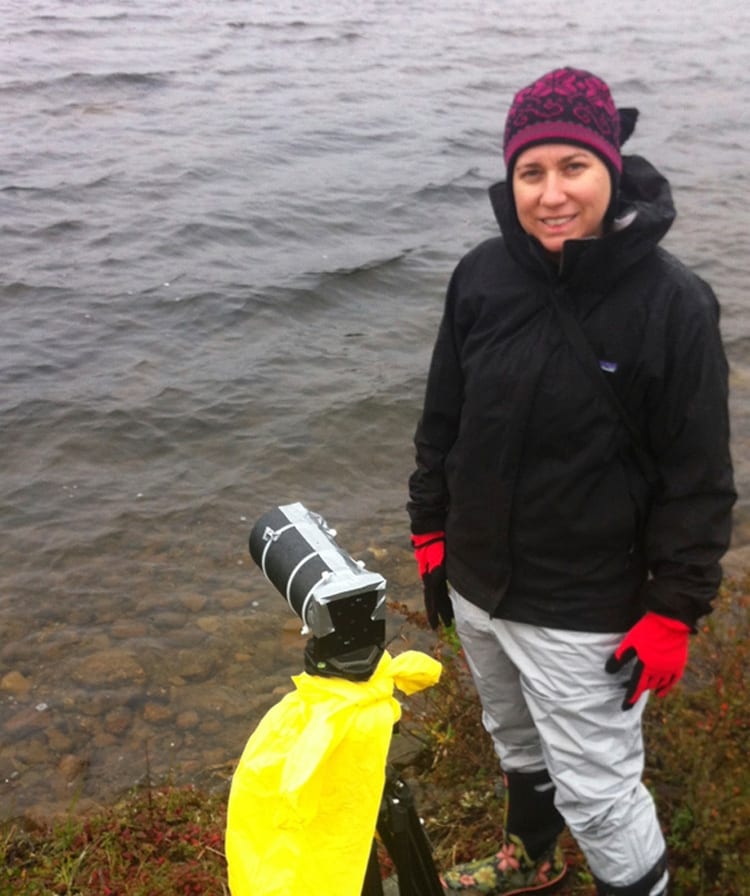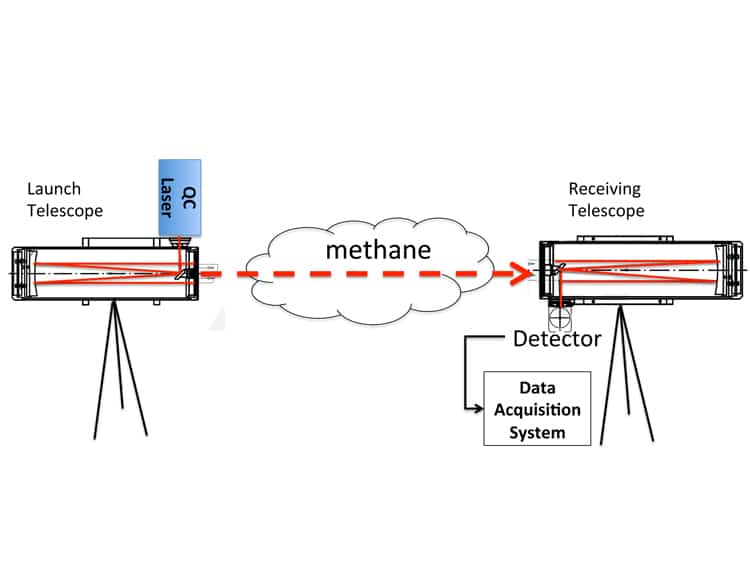Woods Hole Oceanographic Institution Scientist Receives Grant from the Paul G. Allen Family Foundation
January 14, 2014
The Paul G. Allen Family Foundation has awarded Woods Hole Oceanographic Institution (WHOI) assistant scientist Anna Michel $200,000 to develop a sensor that will enable scientists to analyze how methane emissions fluctuate in the Arctic.
Methane is a greenhouse gas with a warming potential up to 25 times that of carbon dioxide. Measurements of methane concentrations over long distances have been elusive due to the difficulty of designing and deploying the needed long-term chemical sensors in the field.
“We are delighted that the Paul G. Allen Family Foundation is supporting this important project,” said WHOI President and Director Susan Avery. “Future deployments of this sensor will enable us to look at how methane emission varies with the seasons and other environmental changes such as temperature, pressure, precipitation, and ice cover. The success of this project will enable necessary, routine measurements of methane in the Arctic and will help us understand the changes occuring there.”
WHOI was one of three research institutions with applicable expertise for improving Arctic observing capability through physical and chemical measurements which received funding from the Foundation.
“Polar ice research is a developing field and the Foundation is interested in finding ways to improve the current understanding of climate and polar ice changes,” said Susan M. Coliton, vice president of The Paul G. Allen Family Foundation. “We hope that funding this laser sensor will provide useful information for climate predictions and assessment of changing Artic conditions.”
Michel will employ a technique using infrared light to identify and measure methane in an open-air environment. The sensor will utilize a 32-laser array and will be designed to be rugged and battery-powered to make highly sensitive measurements of methane in the Arctic across a “long path,” in this case, distances of greater than 100 meters and ideally as far as 1000 meters.
The system will use two telescopes across a region where methane is expected to be emitted, such as coastal inlets, ponds and lakes, tundra, permafrost, and tundra thaw ponds, and makes use of the fact that different gases absorb different wavelengths of light. Using a laser array inside the first telescope will allow scientists to target multiple methane wavelengths, ensuring high sensitivity, high precision measurements. As the light travels across the study region to a second telescope, some of the light is absorbed by methane in the environment. A detector inside the second telescope measures the remaining light, from which scientists can calculate the amount of methane in the environment. The data will be transmitted periodically from the instrument via satellite to the lab.
“We will design the sensor to be operated over a large temperature spectrum and through a range of environmental conditions,” said Michel, who works in WHOI’s Applied Ocean Physics and Engineering department and received her PhD from the MIT-WHOI Joint Program in Oceanography. “For the first time with a long-path system we won’t need a hard-wired system. We’ll power this sensor with batteries and wind and solar recharge systems.”
Michel expects to field test the sensor locally in late 2015 and then will seek additional funding to deploy the sensor for science in the Arctic.
About the Woods Hole Oceanographic Institution
The Woods Hole Oceanographic Institution is a private, non-profit organization on Cape Cod, Mass., dedicated to marine research, engineering, and higher education. Established in 1930 on a recommendation from the National Academy of Sciences, its primary mission is to understand the ocean and its interaction with the Earth as a whole, and to communicate a basic understanding of the ocean’s role in the changing global environment. For more information, please visit www.whoi.edu.
About The Paul G. Allen Family Foundation
Launched by Microsoft co-founder and philanthropist Paul G. Allen and Jo Lynn Allen in 1988, the Allen family’s philanthropy is dedicated to transforming lives and strengthening communities by fostering innovation, creating knowledge and promoting social progress. Since inception, the Foundation has awarded over $475 million to more than 1,400 nonprofit groups to support and advance their critical charitable endeavors in the Pacific Northwest and beyond. The Foundation’s funding programs nurture the arts, engage children in learning, address the needs of vulnerable populations, advance scientific and technological discoveries, and provide economic relief amid the downturn. For more information, go to www.pgafamilyfoundation.org.



